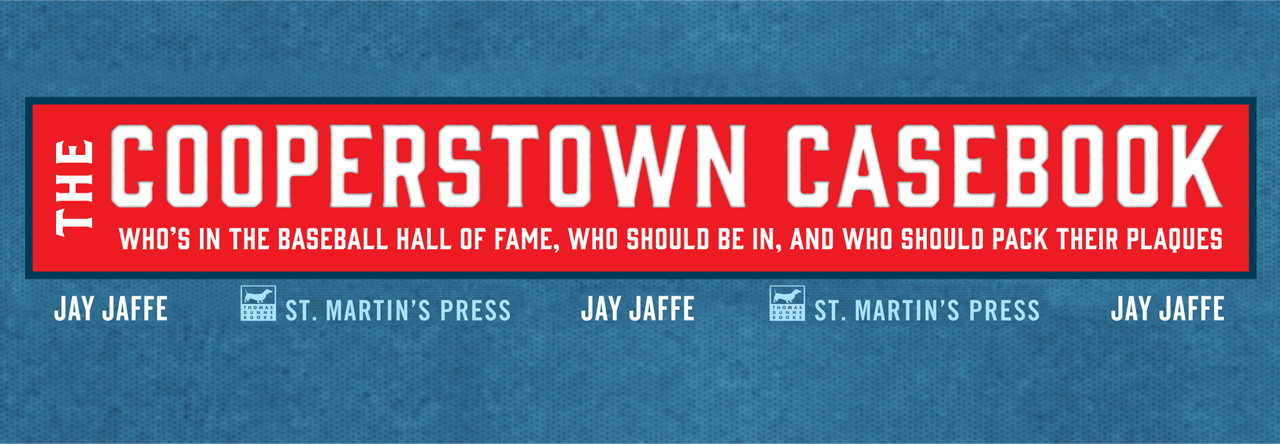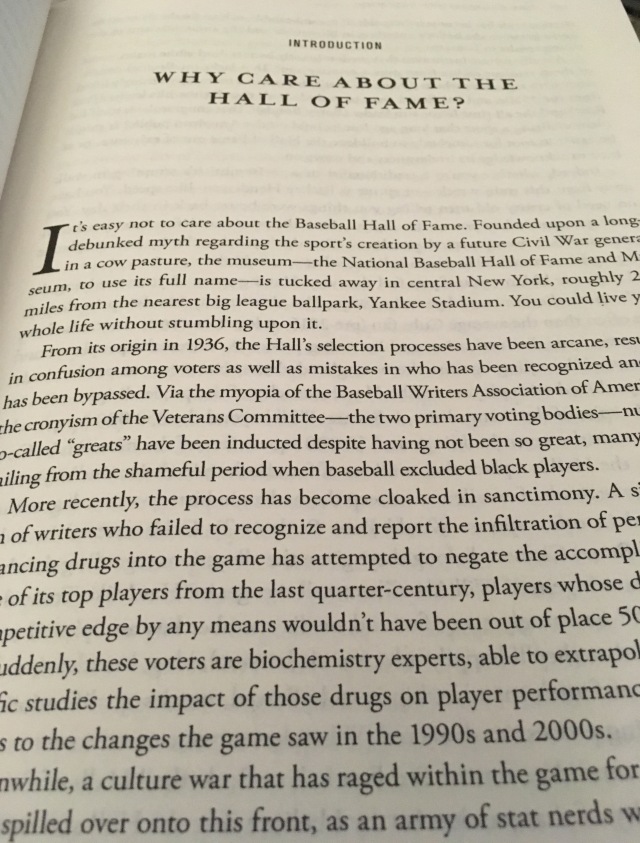

Besides the introduction to The Cooperstown Casebook, three other chapters have been excerpted online at three different outlets.
At Sports Illustrated’s web site, my home base, is a portion of Chapter 4: How the Voters put Third Base in a Corner, which tells the story of the Hall’s origins and the voters’ long failure to honor third basemen. No player bore the brunt of that failure to a greater degree than Ron Santo, a nine-time All-Star and five-time Gold Glove winner who now ranks seventh in JAWS at the position. He was finally elected on the 2012 Golden Era Committee ballot — posthumously:
Santo, a Chicago Cubs great, had died almost precisely a year before the Hall corrected one of its most glaring oversights. He had spent 15 years in the majors (1960 to ’74), mostly as a star third baseman for the Cubs, then 15 years on the BBWAA ballot (1980, then ’85–98, after a rule change restored his eligibility), and nearly a decade being bypassed by various forms of the Veterans Committee (2003, ’05, ’07 and ’09) before finally gaining election. Unfortunately, the beloved Chicago icon had passed away at the age of 70 due to complications from bladder cancer and a body worn out from battling diabetes, which had shortened his career and eventually cost him both legs from the knees down. Rarely had claims of baseball immortality collided with the reality of human mortality so violently.
Alas, the BBWAA and VC voters have rarely gotten it right when it comes to third basemen. Through the 2017 election cycle, fewer major league third basemen are enshrined (13) than at any other position except relievers. Through eight decades of Hall history, at no other position have voters’ inconsistent standards and the messy, inefficient process been so readily apparent. Few players have borne the brunt of their missteps as directly as the late great Cub.
At FanGraphs is a portion of Chapter 6: Blyleven, Morris and the War on WAR, which is about how two pitchers — or rather their Hall candidacies — came to symbolize one front of a culture war within the game, and to redefine Hall of Fame debates in the twenty-first century. The candidacy of Bert Blyleven benefited from sabermetric research and a grassroots campaign by a new generation of baseball media, while that of Jack Morris was slowed by similar research; ultimately, he benefited from a backlash against the same forces that helped elevate Blyleven.
If and when Morris gets in, it will be another example of a small committee electing a subpar candidate, though hardly the worst. Those committees’ processes are opaque, with ballots never seeing the light of day and voters far less accountable than the writers. They’re more likely to share Morris’s disdain for sabermetrics — “Ninety percent of the general managers are in it. That’s why the game is messed up,” he told [blogger Murray] Chass in 2013 — than to reexamine his (or anyone’s) career in an objective light.
If Morris does get elected via that route, will it mean the battles of the late 2000s were for naught? I don’t think so. Subsequent elections have solidified the incorporation of advanced statistics into Hall of Fame debates, with that of Tim Raines — elected in 2017 after a slow, Blyleven-esque climb (see Chapter 14) — a shining example. WAR may not be a staple of every fan’s daily diet or every writer’s work, but its appearance on broadcasts, on ballpark scoreboards, in daily game coverage and other reporting, and even on the backs of baseball cards, is no longer uncommon. As the BBWAA electorate evolves, with younger voters having greater exposure to Bill James, Baseball Prospectus, FanGraphs, JAWS, and much more, that trend will continue.
And finally, at Baseball Prospectus, where JAWS was invented in 2004 (though it didn’t initially have the catchy acronym) it’s the Case Study of slugger Dick Allen from Chapter 13.
Any way you slice it, Allen’s a bit short on the JAWS front, so choosing to vote for him means focusing on that considerable peak while giving him the benefit of the doubt on the factors that shortened his career. From here, the litany is sizable enough to justify that. Allen did nothing to deserve the racism and hatred he battled in Little Rock and Philadelphia, or the condescension of the lily-white media that refused to even call him by his correct name. To underplay the extent to which those forces shaped his conduct and his public persona thereafter is to hold him to an impossibly high standard; not everyone can be Jackie Robinson or Ernie Banks. The distortions that influenced the negative views of him— including Bill James’s crushing dismissal (“[Allen] did more to keep his teams from winning than anybody else who ever played major league baseball. And if that’s a Hall of Famer, I’m a lug nut”) in The Politics of Glory—were damaging. To give them the upper hand is to reject honest inquiry into his career.







